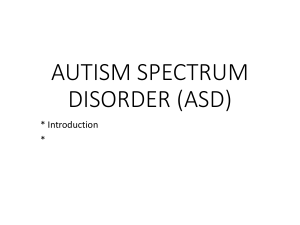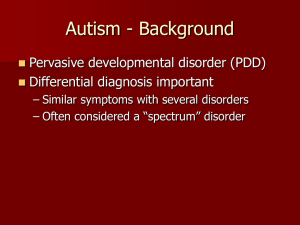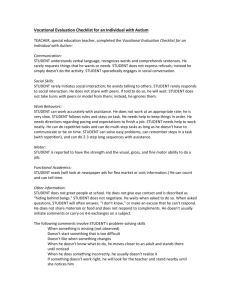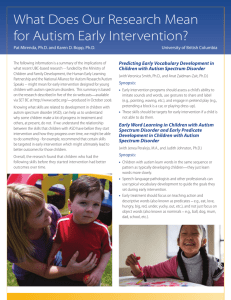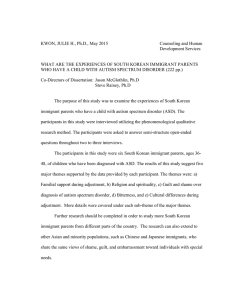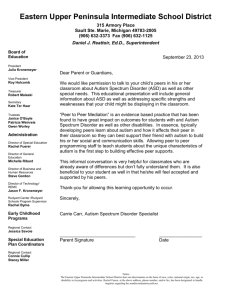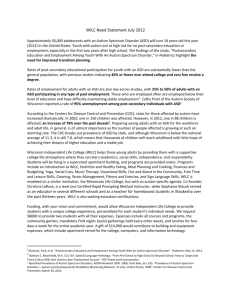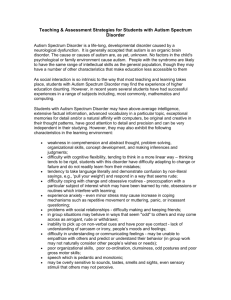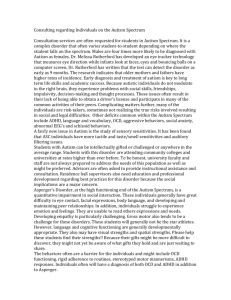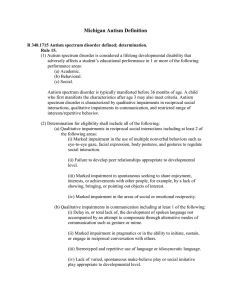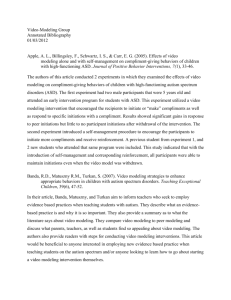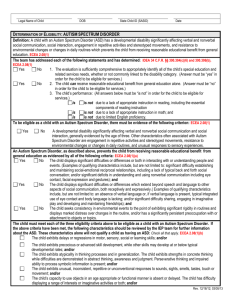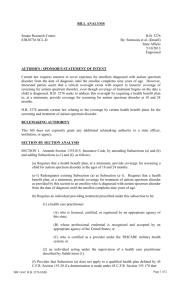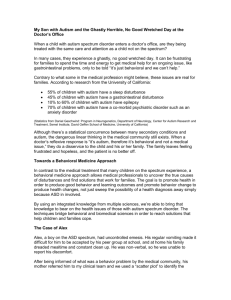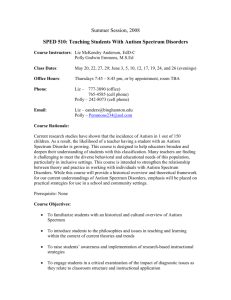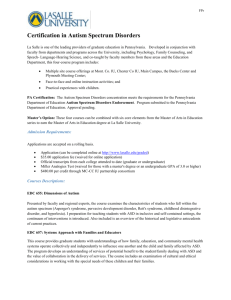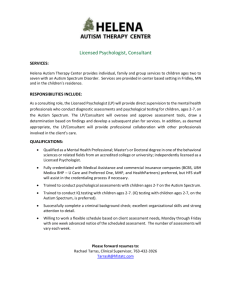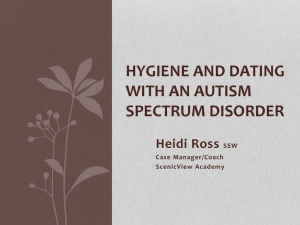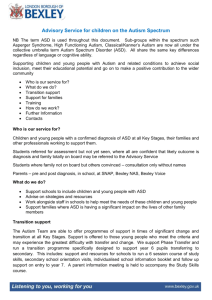DSM-5 Autisim Spectrum Diagnostic checklist
advertisement
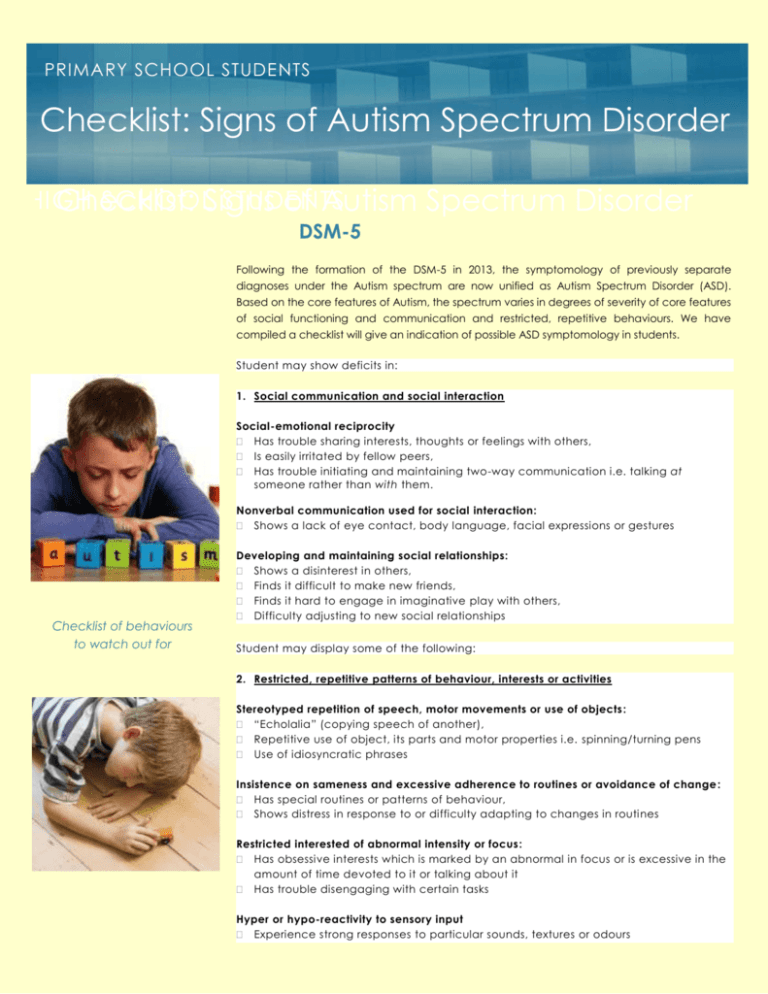
PRIMARY SCHOOL STUDENTS Checklist: Signs of Autism Spectrum Disorder HIGH SCHOOLSigns STUDENTS Checklist: of Autism Spectrum Disorder DSM-5 Following the formation of the DSM-5 in 2013, the symptomology of previously separate diagnoses under the Autism spectrum are now unified as Autism Spectrum Disorder (ASD). Based on the core features of Autism, the spectrum varies in degrees of severity of core features of social functioning and communication and restricted, repetitive behaviours. We have compiled a checklist will give an indication of possible ASD symptomology in students. Student may show deficits in: 1. Social communication and social interaction Social-emotional reciprocity Has trouble sharing interests, thoughts or feelings with others, Is easily irritated by fellow peers, Has trouble initiating and maintaining two-way communication i.e. talking at someone rather than with them. Nonverbal communication used for social interaction: Shows a lack of eye contact, body language, facial expressions or gestures Checklist of behaviours to watch out for Developing and maintaining social relationships: Shows a disinterest in others, Finds it difficult to make new friends, Finds it hard to engage in imaginative play with others, Difficulty adjusting to new social relationships Student may display some of the following: 2. Restricted, repetitive patterns of behaviour, interests or activities Stereotyped repetition of speech, motor movements or use of objects : “Echolalia” (copying speech of another), Repetitive use of object, its parts and motor properties i.e. spinning/turning pens Use of idiosyncratic phrases Insistence on sameness and excessive adherence to routines or avoidance of change : Has special routines or patterns of behaviour, Shows distress in response to or difficulty adapting to changes in routines Restricted interested of abnormal intensity or focus: Has obsessive interests which is marked by an abnormal in focus or is excessive in the amount of time devoted to it or talking about it Has trouble disengaging with certain tasks Hyper or hypo-reactivity to sensory input Experience strong responses to particular sounds, textures or odours

